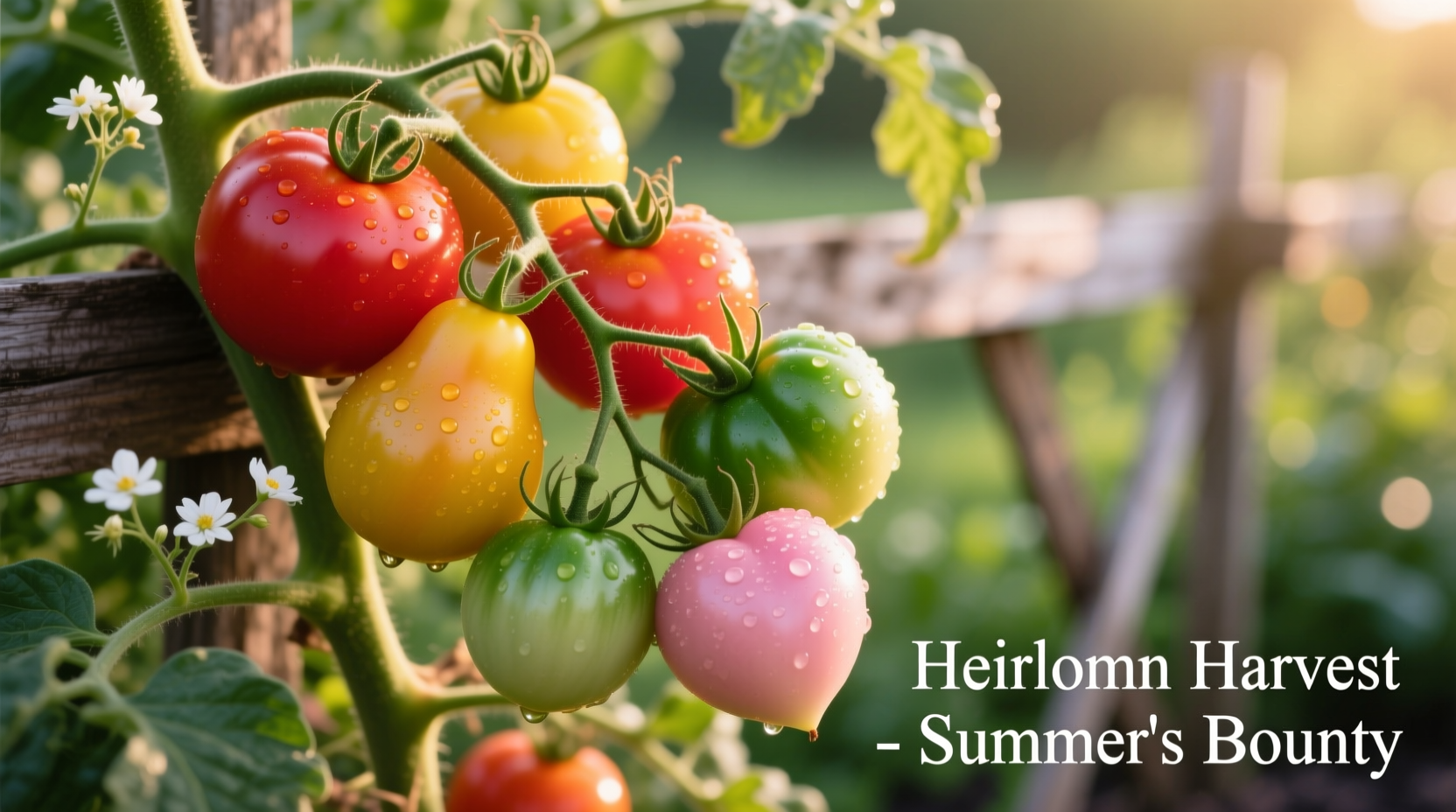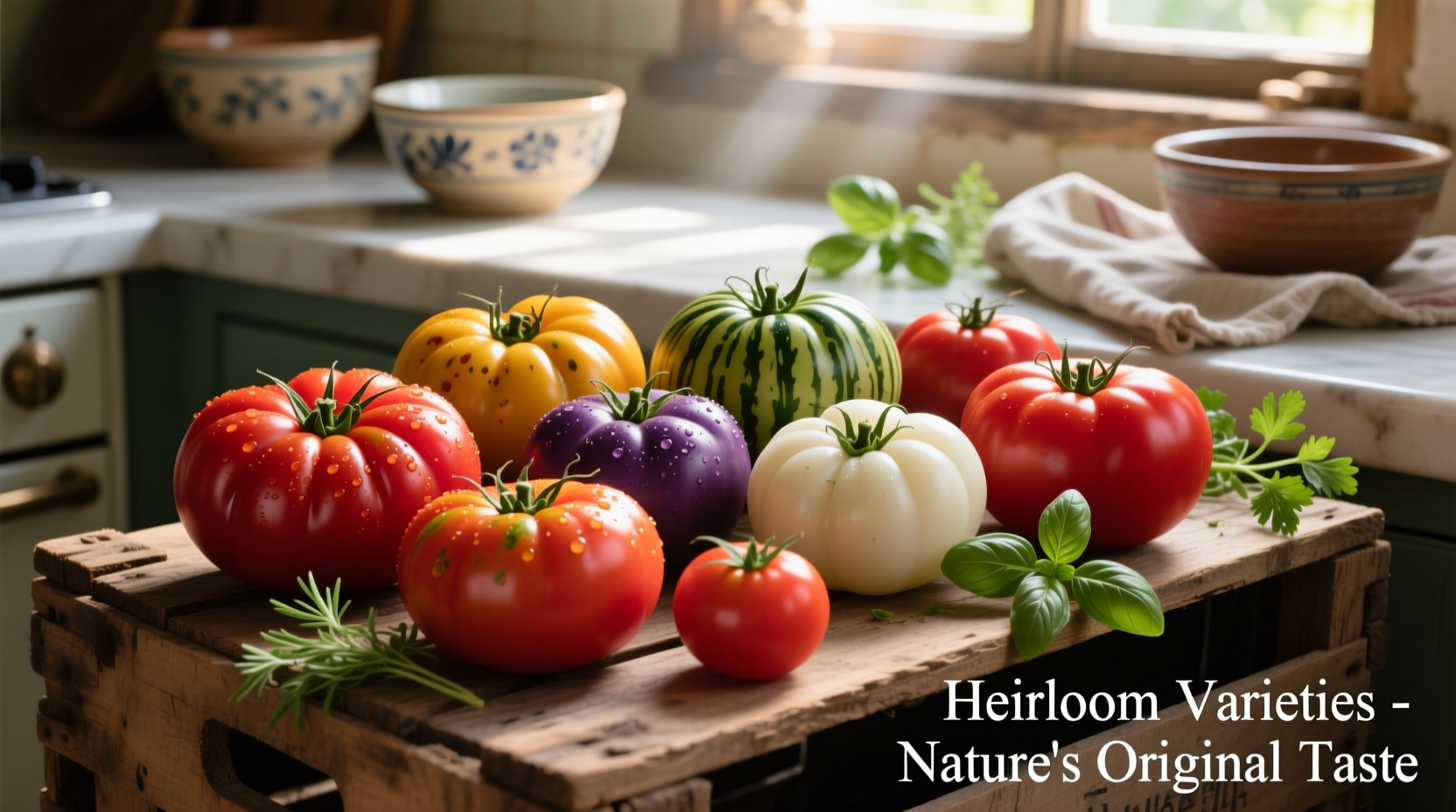Discover why heirloom tomatoes have captivated gardeners and chefs for decades. Unlike commercial hybrids bred for uniformity and shipping durability, heirloom varieties offer an astonishing spectrum of flavors, colors, and textures that transform ordinary dishes into culinary experiences. Whether you're planning your first garden or expanding your tomato repertoire, understanding these heritage varieties helps you select the perfect types for your climate, cooking needs, and taste preferences.
What Truly Defines an Heirloom Tomato
The term "heirloom" carries specific meaning in horticulture, not just marketing appeal. True heirloom tomatoes are open-pollinated varieties that have been cultivated and saved by gardeners for at least 40-50 years, often much longer. These varieties maintain genetic stability through generations when properly isolated from cross-pollination.
Unlike hybrid tomatoes (labeled F1), heirlooms breed true to type, allowing gardeners to save seeds season after season. The USDA Agricultural Research Service confirms that heirloom varieties represent crucial genetic diversity, with many tracing origins to pre-1940s cultivation practices before industrial agriculture prioritized uniformity over flavor.
Your Heirloom Tomato Variety Roadmap
With hundreds of heirloom varieties available, selecting the right types depends on your growing conditions and culinary goals. We've organized these heritage treasures by primary use case to simplify your decision-making process.
Best All-Purpose Slicing Tomatoes
These versatile varieties deliver balanced acidity and sweetness ideal for sandwiches, salads, and fresh applications:
- Brandywine - The king of heirlooms with massive pink fruits (1-3 lbs), complex sweet-tart flavor, and potato-leaf foliage. Requires 80-100 days to mature and performs best in cooler climates.
- Cherokee Purple - Deep mahogany interior with smoky-sweet flavor profile. Developed by the Cherokee Nation, this 1890s variety excels in southern climates and ripens in 75-80 days.
- Mortgage Lifter - Famous for its role in Depression-era history, producing 2-3 lb pink fruits with exceptional juiciness. Needs 80+ days and consistent moisture.

Specialty Varieties for Specific Culinary Applications
Match your tomato variety to your cooking style for maximum flavor impact:
| Variety | Best For | Flavor Profile | Days to Harvest |
|---|---|---|---|
| Roman Candle | Pasta sauces | Rich, low-acid with meaty texture | 70-75 |
| Green Zebra | Salads, pickling | Tangy with citrus notes, firm flesh | 65-70 |
| Black Krim | Caprese salads | Earthy, salty-sweet complexity | 75-80 |
| Yellow Pear | Preserves, garnishes | Mild, honey-like sweetness | 65 |
Heirloom Tomato Evolution: A Brief Timeline
Understanding the historical context helps appreciate why these varieties matter:
- Pre-1500s: Wild tomato species native to western South America
- 1521: Spanish conquistadors bring tomatoes to Europe from Mesoamerica
- 1800s: American gardeners develop distinct regional varieties through seed saving
- 1940s: Industrial agriculture shifts focus to uniform, firm hybrids for shipping
- 1970s: Seed Savers Exchange founded, preserving heirloom varieties from extinction
- Present: Renewed interest in flavor diversity drives heirloom popularity
According to Cornell University's Cooperative Extension, this timeline reflects a critical shift in agricultural priorities. Their research shows that modern commercial hybrids contain 10-15% less sugar and volatile compounds responsible for flavor complexity compared to heirloom varieties.
Practical Growing Considerations for Heirloom Tomatoes
While heirlooms offer superior flavor, they present unique challenges compared to hybrids. Understanding these limitations helps set realistic expectations:
Disease Resistance Limitations
Most heirlooms lack the disease resistance bred into modern hybrids. The University of California Agriculture and Natural Resources notes that heirloom varieties typically show:
- Lower resistance to fusarium wilt (races 1-2)
- Limited tolerance to tomato spotted wilt virus
- Increased susceptibility to cracking in heavy rain
- Generally shorter productive lifespan than hybrids
Successful heirloom cultivation requires strategic planning: rotate crops annually, provide excellent air circulation, and consider companion planting with basil or marigolds to deter pests naturally.
Climate-Specific Recommendations
Match varieties to your growing zone for best results:
- Cooler climates: Stupice (early producer), Siberian (cold-tolerant), and Brandywine
- Hot, humid regions: Cherokee Purple, Arkansas Traveler, and Mortgage Lifter
- Short seasons: Oregon Spring, Siberian, and Glacier
Maximizing Flavor: Harvest and Usage Tips
Heirloom tomatoes reach peak flavor when harvested at full vine-ripeness. Unlike commercial tomatoes shipped green, heirlooms continue developing sugars and aromatic compounds until fully colored.
For optimal flavor preservation:
- Store at room temperature away from direct sunlight
- Never refrigerate whole tomatoes (chilling destroys flavor compounds)
- Use within 3-5 days of peak ripeness for best eating quality
- Pair varieties with complementary dishes: acidic types with rich meats, sweet varieties in salads
Research from the USDA's Flavor Research Team confirms that heirloom varieties contain higher concentrations of glutamic acid (responsible for umami) and diverse volatile compounds compared to standard hybrids, explaining their superior taste complexity.
Finding Authentic Heirloom Varieties
Not all "heirloom" labeled tomatoes are genuine heritage varieties. To ensure authenticity:
- Source seeds from reputable heirloom specialists like Seed Savers Exchange or Baker Creek Heirloom Seeds
- Look for varieties with documented histories (avoid "new heirlooms" less than 40 years old)
- Ask farmers at markets about specific variety origins
- Join tomato-growing forums like TomatoForum.com for variety recommendations











 浙公网安备
33010002000092号
浙公网安备
33010002000092号 浙B2-20120091-4
浙B2-20120091-4